How Many Yards Are in a Ton of Gravel?
Important Point
The gravel is a versatile and most used material in different structures and landscaping jobs. It’s popular for its cost-effectiveness, durability, and ability to provide excellent drainage.
Whether you’re planning to create a driveway, lay a foundation, or enhance the aesthetics of your garden, gravel can be a good choice for your home.
So, before you start any project referring to gravel, it’s vital to understand the relationship between volume and weight.
When it comes to gravel, measurements are generally made in both volumes in cubic yards and weights in tons.
The quantity of gravel you require for your job will rely on the region you desire to coat and the depth of the gravel layer.
It’s important to have a clear vision of how much gravel you’ll require to ensure you purchase the correct amount and avoid overspending or running short.
To know, How many yards in a ton of first,fr st we require to consider some of the below-
The Density of Gravel
The density of gravel can vary depending on the type and size of the gravel particles. Generally, gravels have a density of about 2,600 to 2,800 Ib per cubic yard.
Standard Weight for a Ton
In the United States, a ton (short ton) is equivalent to 2,000 pounds.
To calculate the number of cubic yards in a ton of gravel, we can use the following formula:
- Number of cubic yards = Weight of gravel in pounds / Density of gravel in pounds per cubic yard
- Let’s assume the density of the gravel is 2,800 pounds per cubic yard. Using the formula:
- Several cubic yards = 2,000 pounds 1 ton / 2,800 pounds per cubic yard ≈ 0.714 cubic yards.
So, there are approximately 0.714 cubic yards of gravel in one ton.
Keep in mind that this is a general estimation, and the actual volume in a ton may vary slightly depending on the density of the gravel you use.
To get a precise measurement, it’s always best to consult with your gravel supplier or refer to the product specifications.
Finally, when purchasing gravel, consider ordering a bit more than the exact calculated amount to account for compaction and slight variations in coverage.
This will help ensure you have enough material to complete your project without any unexpected interruptions.
How Many Yards of Gravel Per Ton?
In construction engineering, the quantity of gravel required per ton can vary depending on the specific type of gravel being used and its density.
In construction projects gravel is generally used for varied applications such as foundations, road bases, and landscaping.
It is crucial to understand the relationship between volume, weight, and density to determine how many yards of gravel are in a ton.
The density of Gravelthe
The density of gravel is generally calculated in Ib per cubic foot (lb/ft³) or kg per cubic meter (kg/m³).
The density varies based on the type of gravel, as different types have different compositions and particle sizes.
Conversion Factors
To calculate the quantity of gravel in tons to yards, you’ll need to apply some conversion factors.
First, you need to convert the density to pounds per cubic yard (lb/yd³). Once you have the density in pounds per cubic yard, you can then convert the weight in tons to yards.
Here are the conversion factors you’ll need:
- 1 ton = 2,000 pounds
- 1 cubic yard = 27 cubic feet
Useful article for you
- How Much Does a Yard of Concrete Weigh
- How Tall Is a Door
- How Many Stairs in a Flight
- How Many Bags of Concrete in a Yard
- How to Get Burnt Smell Out of Microwave
- How Far Apart Should Fence Posts Be
- How Are Bridges Built Over Water
- How Many People Died Building the Great Wall of China
- How to Draw House
- How to Build a Lean to Roof
- How Many Bags of Concrete for 1 Yard
- How Much Does Cinder Block Cost
- How to Get a House for Free
- How Much Does It Cost to Soundproof a Room
- How to Read a Measuring Tape in Meters
- How to Mount a TV on a Brick Wall
- How Many Brick Are in a Cube
- How Is Transported Soil Different from Residual Soil
- How to Use Washers
- How Is Tar Made
- How Much Does a Concrete Slab Cost?
- How Many Shingles Do I Need for a 24×24 Garage?
- How to Tell Pvc Pipe Size
- How Much Does Diesel Weigh a Gallon
- How Much a Gallon of Water
- How to Reduce Cost of House Construction
- How to Remove Water Based Paint from Concrete
- Install Concrete Shower Pan
- How to Find the Volume of a Trapezoidal Prism
- How Much Is a Yard of Dirt
Calculating Yards of Gravel per Ton
Let’s walk through the calculation using an example:
Suppose you have gravel with a density of 100 lb/ft³.
Step 1
Convert the density to pounds per cubic yard (lb/yd³). Since there are 27 cubic feet in 1 cubic yard, we can use the following conversion- Density (lb/yd³) = 100 lb/ft³ * (27 ft³/1 yd³) = 2,700 lb/yd³
Step 2
Convert the weight in tons to pounds. Let’s assume you have 2 tons of gravel. To convert to pounds- Weight (lb) = 2 tons * 2,000 lb/ton = 4,000 lb
Step 3
Calculate the yards of gravel. Yards = Weight (lb) / Density (lb/yd³) = 4,000 lb / 2,700 lb/yd³ ≈ 1.48 yd³
So, in this example, you would need approximately 1.48 cubic yards of gravel to equal 2 tons.
Please note that the density of gravel can vary significantly depending on factors such as compaction, moisture content, and particle size.
It is important to check with your local supplier or use more specific density values for the particular type of gravel you are using to get a more accurate estimation.
Also, Read: Grey Water Black Water
How Much Does a Yard of Gravel Cover?
A yard of gravel is a common unit of measurement used in landscaping and construction schemes to determine the quantity of gravel needed.
Understanding how much area a yard of gravel can cover is crucial for accurately estimating material requirements.
Generally, a yard of gravel covers around 100 to 120 square feet, considering a depth of about 2 to 3 inches.
The coverage area of a yard of gravel can vary depending on several factors, including the size and shape of the gravel, the depth of the spread, and the compactness of the material.
Gravel comes in various sizes, such as pea gravel, crushed stone, or river rock, each with its coverage characteristics.
An example, if you’re using pea gravel, which is typically smaller and rounder in shape, you can expect to cover more area than with larger, irregularly shaped crushed stone.
Similarly, a shallower spread of gravel will cover a larger area compared to a deeper application.
To determine the coverage area more precisely, it’s essential to calculate the volume of gravel required.
Since a yard is a unit of volume, measuring 3 feet by 3 feet by 3 feet (or 27 cubic feet), you can use this information to estimate the coverage area based on the desired depth of gravel.
Suppose you want to spread the gravel to a depth of 2 inches.
In that case, you can calculate the coverage area by dividing the volume of gravel (27 cubic feet) by the product of the desired depth (2/12 feet, converted to feet) and a constant factor of 1.5 to account for compaction and settling.
This calculation yields an approximate coverage area of 108 square feet.
It’s always advisable to consult with a professional or supplier who can provide more accurate measurements based on the specific type of gravel you intend to use.
In conclusion, a yard of gravel generally covers around 100 to 120 square feet when spread to a depth of 2 to 3 inches.
Remember to consider the type of gravel, desired depth, and potential compaction to obtain a more precise estimation of the coverage area.
Also, Read: Definition Efflorescence | Efflorescence in Concrete
Calculating Material Step by Step:
The first step is you have to do a complete measurement of the area that you wish to cover with the gravel.
Secondly, you have to understand the units of measurement, like 1-yard gravel, which means 100 square feet at 75mm depth and 11/2 inches depth at 200 Square feet.
By the above calculation number, you can easily calculate how many yards of gravel are needed for your required area.
After that last step that you have to follow, which is, to multiply the required gravel value in yards by 1.13.
Which will provide you with an approximate value in tons of materials that are required to finish your work.
Useful article for you:
- Best Tiles for Floor
- Size of Tiles
- What Is Vitrified Tiles
- Types of Roof Tiles
- How to Install Granite Floor
- What Is Tile
- Granite Vs Marble
- Types of Marble Flooring
- How to Fix Ceramic Tile Popping Up
- What Are Geotextiles
- Soft Flooring
- Front Porch Flooring Ideas Over Concrete
- Disadvantages of Epoxy Flooring
- Mastic Asphalt Flooring
- Asphalt Flooring
- Vinyl Vs Laminate Flooring
- Is Bamboo Flooring Waterproof
- Types of Flooring
- What Is Granolithic Floors
- Cmu Construction
- Forest Green House with White Trim
- Vaulted Ceiling Rafters
- Pier Abutment
- 1 Yard of Gravel Weight
- Types of Pavers and Cost
How Many Tons Per Yard of Gravel?
When it comes to construction, landscaping, or any project involving gravel, understanding measurements and quantities is crucial.
One of the important factors of gravel is its weight, typically measured in tons per yard.
Knowing the conversion rate between tons and yards is vital to ensure accurate planning and budgeting.
In this guide, we will delve into the concept of tons per yard of gravel, its significance, and how it influences various projects.
What is a Ton of Gravel?
In this article, a ton is a unit of weight equivalent to 2,000 Ib or approximately 907 kg. Gravel, a loose aggregation of small stones and rock fragments, comes in various sizes and types.
It is widely used in construction, landscaping, and road-building, and as a base material for numerous applications.
What is a Yard of Gravel?
A yard, in the context of gravel, is a standard unit of volume used to measure the quantity of gravel in the United States.
One yard is equivalent to 27 cubic feet or approximately 0.7646 cubic meters.
Also, Read: How Long Is a Flight of Stairs?
How Many Tons per Yard of Gravel?
The number of tons per yard of gravel varies depending on the type of gravel and its density.
Different types of gravel have different densities, meaning their weights in tons per yard will differ.
We provide here a few familiar kinds of gravel and their approximate tons per yard-
Crushed Stone
- 3/8 inch or 0.95 cm gravel- 1.3 tons per yard.
- 3/4 inch or 1.9 cm gravel- 1.6 tons per yard.
- 1 inch or 2.5 cm gravel- 1.4 tons per yard.
- 1.5 inches or 3.8 cm gravel- 1.5 tons per yard.
- 2-inch or 5.1 cm gravel- 1.9 tons pinching
Pea Gravel
- 3/8 inch or 0.95 cm gr2-inch1.4 tons per yard.
- 3/4 inch or 1.9 cm gravel- 1.4 tons per yard.
River Rock
- 1 inch or 2.5 cm gravel- 1.4 tons per yard.
- 3/4 inch or 1.9 cm gravel- 1.4 tons per yard.
Dense Grade Aggregate (DGA) or Quarry Process
- 3/4 inch or 1.9 cm gravel- 1.6 tons per yard.
It is important to note that the above figures are approximate and can vary based on compaction, moisture content, and other factors.
Also, Read: What Are Residential Buildings
How Many Cubic Yards Does a Ton of Gravel Cover?
The coverage of a ton of gravel in cubic yards depends on the gravel’s density and the desired depth of coverage.
On average, one ton of gravel typically covers about 0.5 to 0.75 cubic yards when spread to a depth of 2 inches.
For lighter gravels with a density of around 2,200 pounds per cubic yard, the coverage may be closer to 0.75 cubic yards.
In contrast, heavier gravels with a density of approximately 2,800 pounds per cubic yard might cover around 0.5 cubic yards.
It’s essential to know the gravel’s specific density and calculate coverage accordingly based on the depth required for your project.
Always consult with your supplier or use accurate density measurements to ensure you purchase the right amount of gravel for your intended application.
How Many Cubic Yards in 3 Tons of Gravel?
Measurement of cubic yards in 3 tons of gravel relies on the gravel density.
There are varying densities of the different types of gravel.
So, here we provide you with an available conversion for an average density. One cubic yard of typical gravel weighs about 1.35 tons (or 2,700 pounds).
So, to convert 3 tons of gravel to cubic yards, you can use the following formula:
- Number of cubic yards = (Number of tons) / (Weight of 1 cubic yard of gravel)
- Number of cubic yards = 3 tons / 1.35 tons per cubic yard ≈ 2.22 cubic yards
Please note that this is an approximate value, as the actual conversion will depend on the specific density of the gravel.
If you have the specific density of the gravel you’re working with, you can use that to get a more accurate conversion.
Also, Read: What Kind of Wall Do I Have
How Many Tons of Gravel Are in a Dump Truck?
The number of tons of gravel that a dump truck can carry depends on the size and capacity of the dump truck.
The capacity of dump trucks is normally calculated in cubic yards and they come in different sizes.
The most common dump truck sizes and their corresponding capacities are as follows:
Small Dump Truck
Holds about 5 to 6 cubic yards of gravel, which can weigh around 7.5 to 9 tons (depending on the density of the gravel).
Medium Dump Truck
Holds about 10 to 12 cubic yards of gravel, which can weigh around 15 to 18 tons (depending on the density of the gravel).
Large Dump Truck
Holds about 20 to 26 cubic yards of gravel, which depending on the density of the gravel can weigh around 30 to 38 tons.
You have to remark that these are general estimates and can vary depending on the specific model and composition of the dump truck, as well as the density of the gravel being carried.
It’s essential to consider the weight limits and regulations for your area to ensure the safe and legal transportation of materials in a dump truck.
Also, Read: How To Install A Welded Wire Fence | How To Install A Welded Wire Fence correctly
How Many Yards of 3/4 Inch Gravel in a Ton?
To determine the number of yards of 3/4 inch gravel in a ton, we’ll need to know the density of the gravel.
Depending on the variety of gravel the density can vary, so here we provide you with an expected estimate.
The familiar density of 3/4 inch gravel is approximately 1.4 tons per cubic yard.
Now, to find out how many yards of gravel are in a ton, we can use the following conversion:
- 1 ton = 2000 pounds
- 1 cubic yard = 1.4 tons
So, to find the number of yards in a ton of 3/4 inch gravel- The number of yards = 1 ton / 1.4 tons per cubic yard. Number of yards = 0.714 cubic yards
Therefore, there are approximately 0.714 yards of 3/4 inch gravel in one ton (assuming a density of 1.4 tons per cubic yard).
Keep in mind that this value may vary slightly depending on the actual density of the gravel used.
Also, Read: Red Brick House with White Siding
How Many Yards Are 5 Tons of Gravel?
The density of the gravel of 5 tons, and the gravel number of yards depends.
Different types of gravel can have different densities, so there isn’t a one-size-fits-all answer.
To convert tons to yards, you need to know the density of the gravel in tons per cubic yard.
When you have that data, you can utilize the following conversion-
- 1 ton = 0.907 metric tons
- 1 metric ton = 1.10231 tons
- 1 cubic yard = 0.7646 cubic meters.
So, if you have the density of the gravel in tons per cubic yard, you can use this formula-
- Number of yards = Number of tons / Density in tons per cubic yard.
- An example, if the density of the gravel is 1.5 tons per cubic yard, then
- Number of yards = 5 tons / 1.5 tons per cubic yard ≈ 3.33 cubic yards
You have to note that you’ll need to know the specific density of the gravel to generate further conversion.
You can not convert tons to yards perfectly if you don’t have the above knowledge.
Also, Read: What Is Soil Vent Pipe | How Does Soil Stack Pipe Works | Soil Vent Pipe Material | Types of Plumbing System
How Many Yards in a Ton of Limestone?
In a ton of limestone, the number of yards can vary depending on the moisture content and density of the limestone. So, we can provide you with a common approximation.
Considering the limestone has an average density of around 1600 kg per cubic meter or 100 Ib per cubic foot and the ton referred to here is the short ton equal to 2,000 pounds, we can calculate the approximate volume of one ton of limestone in cubic yards.
1 ton = 2,000 pounds. The density of limestone = 100 pounds per cubic foot
To find the volume in cubic feet:
- Volume (cubic feet) = Weight (pounds) / Density (pounds per cubic foot)
- Volume (cubic feet) = 2,000 pounds / 100 pounds per cubic foot.
- To change cubic feet to cubic yards-
- 1 cubic yard = 27 cubic feet
- Volume (cubic yards) = 20 cubic feet / 27 cubic feet per cubic yard
- Volume (cubic yards) ≈ 0.74 cubic yards
So, there are roughly 0.74 cubic yards in one short ton of limestone, adopting the density and weight values referred to above.
Remember that existing values may differ, so it’s best to verify with the specific measures of the limestones.
How Many Yards Are in a Ton of Gravel?
The way we change tons of gravel into yards in the building industry is by multiplying tons by 0.714. For example, 1 ton of gravel = 0.714 yards of gravel. 2 tons of gravel = 1.428 yards.
How Many Yards in a Ton of Dirt?
A cubic yard of topsoil weighs 1.35 tons or 2,970 lbs. This means there is . 74 cubic yards of dirt in one ton when its dry.
How Many Yards in a Ton of Limestone?
The density of crushed limestone is 90 lb/ft3 which equates to 1441.66 kg/m3 in SI measurements. As a result, 1 yard of crushed limestone equals 1.22 tons. So, 0.82 cubic yards of limestone is included in one tonne of crushed limestone.
How Much Is 1 Ton of Gravel?
The average cost per ton of gravel is approximately $35.00 to $50.00 per ton. In general, the larger the stone you are purchasing, the cheaper its cost per ton will be. Gravel is used for a variety of purposes, such as: Driveways and walkways.
How Many Tons Is 10 Yards of Gravel?
1 ton of gravel weighs 2000 pounds. So to find out how many yards are in 1 ton of gravel, you divide 2000/ 2800 = 0.714 cubic yard. There are 0.714 cubic yards in a ton of gravel.
How Many Tons of Gravel in a Dump Truck?
In general, a dump truck can carry 13 to 25 tons of gravel. More specifically: A 10-wheeler can carry 13 tons (or 26,000 pounds) (9.28 cubic yards). A large flat bed truck can carry 25 tons (or 50,000 pounds) of gravel (17.85 cubic yards).
Calculating Yards of Gravel Per Ton for Driveway
To measure the driveway in cubic feet, multiply the length by width by depth. For cubic yards, divide the total cubic feet by 27. Because one cubic yard of gravel is equal to 1.13 tons, you can multiply your total cubic yards by 1.13 to convert this measurement to tons.
How Much Is a Yard of Gravel?
Prices for gravel typically range from about $15 to up to $75 per yard on average, and purchasing by bulk can fluctuate that cost even further.
How Much Does a Dump Truck Load of Gravel Cost?
What is the cost of a dump truck load of gravel? For a dump truck load of gravel, expect to pay between $150-$400 for a truckload of drainage or pea gravel, and $350-$550 for a 10-14 yard dump truck load, depending on the material type and delivery distance.
How Much Does a Yard of Gravel Cover?
The following measurements are a general guide to the amount of gravel coverage per cubic yard 1 cubic yard = 3” depth for 100 square feet. If you’re still not sure or want to get the most accurate measurement possible, you can opt to use a gravel calculator.
How Many Square Feet Does a Yard of Rock Cover?
A yard of any material will cover approximately 100 square feet at 3 inches of depth.
How Many Square Feet Does 5 Tons of Gravel Cover?
Using 2 inches for the depth, the following measurements are a guide to the amount of gravel coverage per ton: 1/4 to 1/2 inch gravel, 100 square feet per ton; 1/2 to 1 inch gravel, 90 square feet per ton; and 1 1/2 to 2 inches gravel, 80 square feet per ton.
Material Estimate for House Construction
- Cement = 400 bags.
- Sand = 51 Cubic meter or 81,600 kg. …
- Aggregate = 38 Cubic meter or 60,800 kg. …
- Steel = 4 kg/sq. ft. = 4000 kg/1000 sq. ft.
- Paint = 180 lt.
- Bricks = 8 Bricks/sq. ft. = 8000 Bricks/1000 sq. ft.
- Flooring = 1300 sq.
Estimating Materials for Construction
- Make a list of all the materials.
- Calculate the amount of each material you’ll need.
- Add it all up.
- Guess about how long it will take your crew to do that work.
- Add 10-15% for waste and lost productivity.
How to Calculate Building Materials?
It’s easy to figure out – simply take the total amount of square feet that were measured for the project, then divide the total amount of square feet by the coverage rate of the material.
How Many Tons Per Yard of Gravel?
Because one cubic yard of gravel is equal to 1.13 tons, you can multiply your total cubic yards by 1.13 to convert this measurement to tons.
What Is a Ton of Gravel?
1 ton of gravel weighs 2000 pounds. So to find out how many yards are in 1 ton of gravel, you divide 2000/ 2800 = 0.714 cubic yard. So, there are 0.714 cubic yards in a ton of gravel.
Tons to Yards Calculator Gravel
To convert tons of gravel into yards, simply multiply tons by 0.714. For example, 2 tons of gravel is 2 × 0.714 = 1.428 cubic yards, 3 tons is equal to 3 × 0.714 = 2.142, and so on.
1 Ton of Gravel Coverage
A ton of gravel will cover approximately 100 square feet, 2 inches deep.
What Is a Yard of Gravel?
When Gravel or Dirt suppliers ask how many yards you need they are talking about a cubic yard. A cubic yard is a measurement that is 3 feet by 3 feet by 3 feet. A cubic yard measures volume where a ton measures weight.
How Much Is a Yard of Gravel Weigh?
One cubic yard of gravel can weigh between 2,400 to 2,900 lbs. Or up to one and a half tons approximately. Generally, a cubic yard of gravel provides enough material to cover a 100-square-foot area with 3 inches of gravel.
1 Yard of Dirt Weight
A cubic yard of dry sandy soil can weigh about 2,500 pounds because sand is heavy. 1 cubic yard of dry clay soil weighs around 1,700 pounds because clay is lighter. Topsoil weighs around 2100 pounds per cubic yard. Clean fill weighs about 2150 pounds per cubic yard.
1 Yard of Gravel Coverage
A cubic yard of gravel covers about 108 square feet at three inches thick. At 2.5 inches deep, a cubic yard of gravel covers 129.6 square feet.
Like this post? Share it with your friends!
Suggested Read –
Originally posted 2023-08-25 14:48:32.
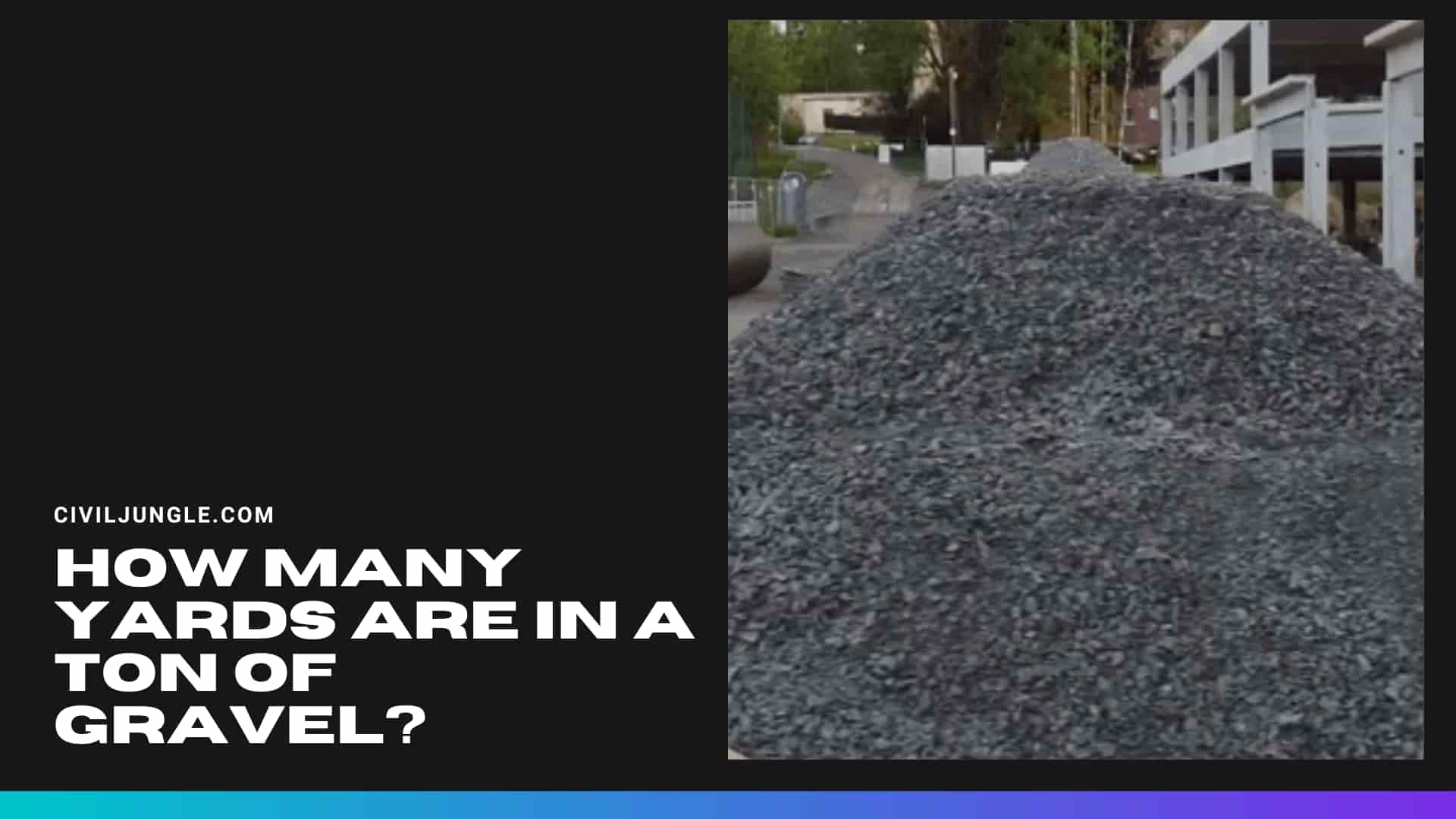
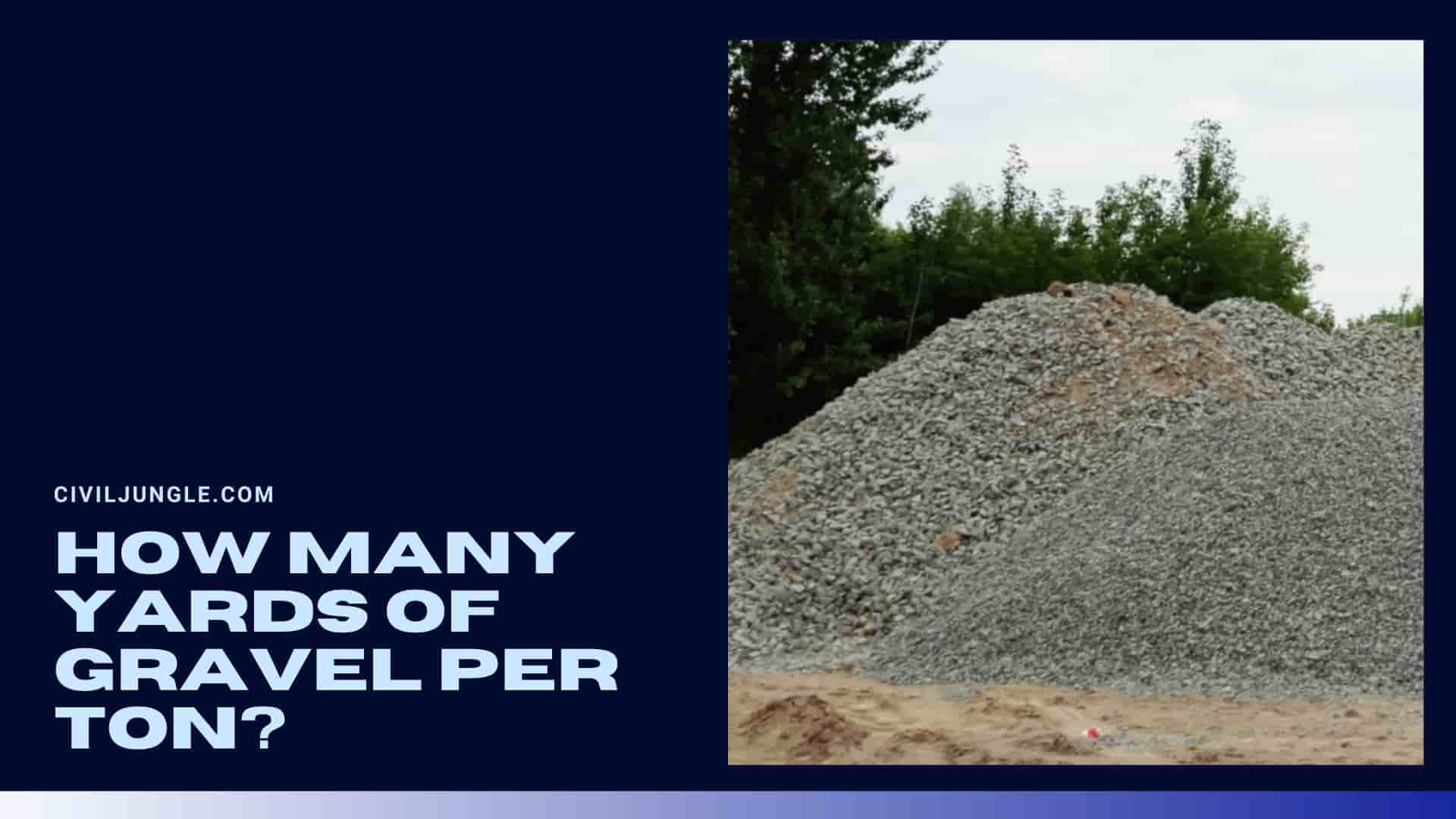
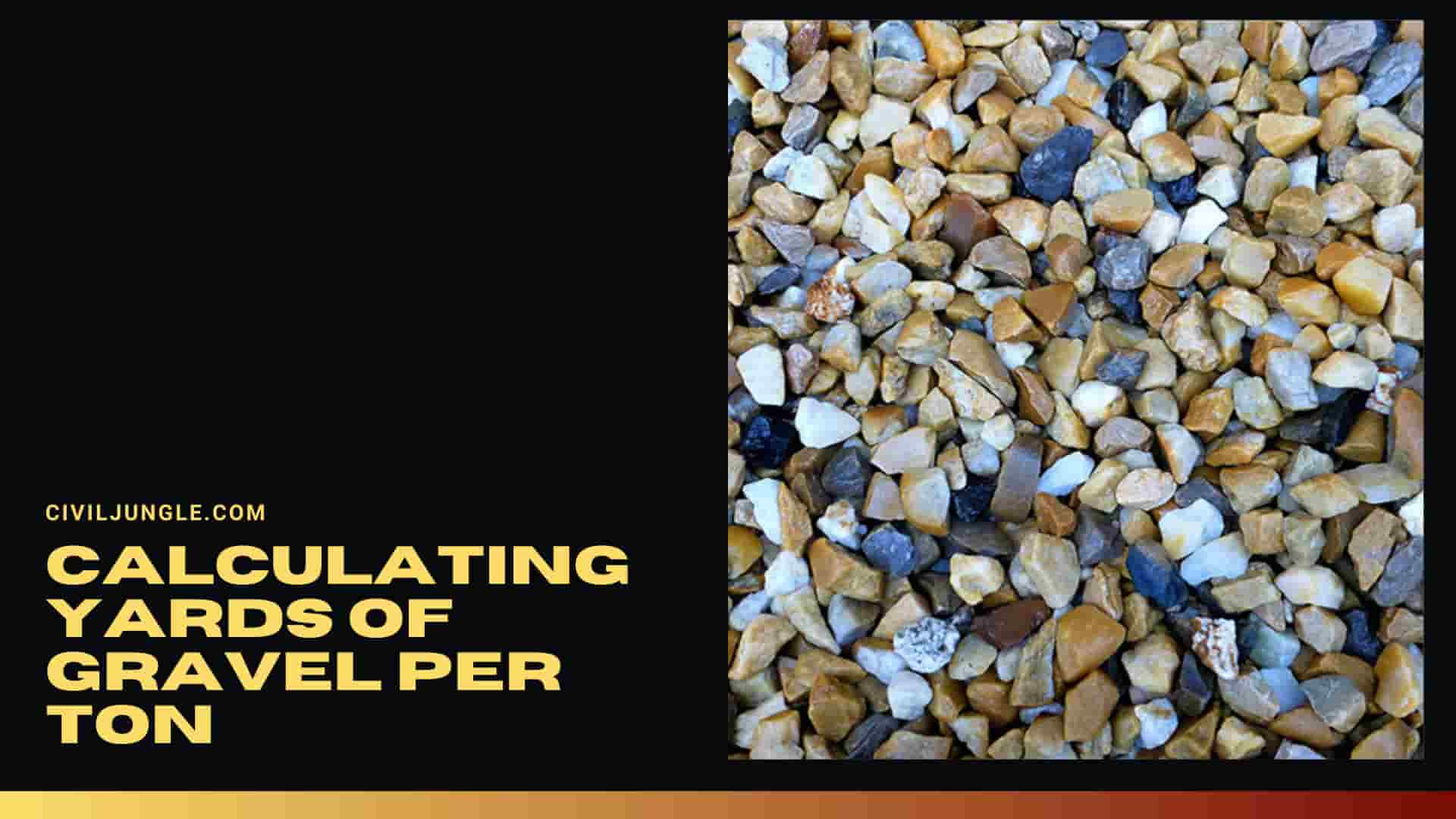
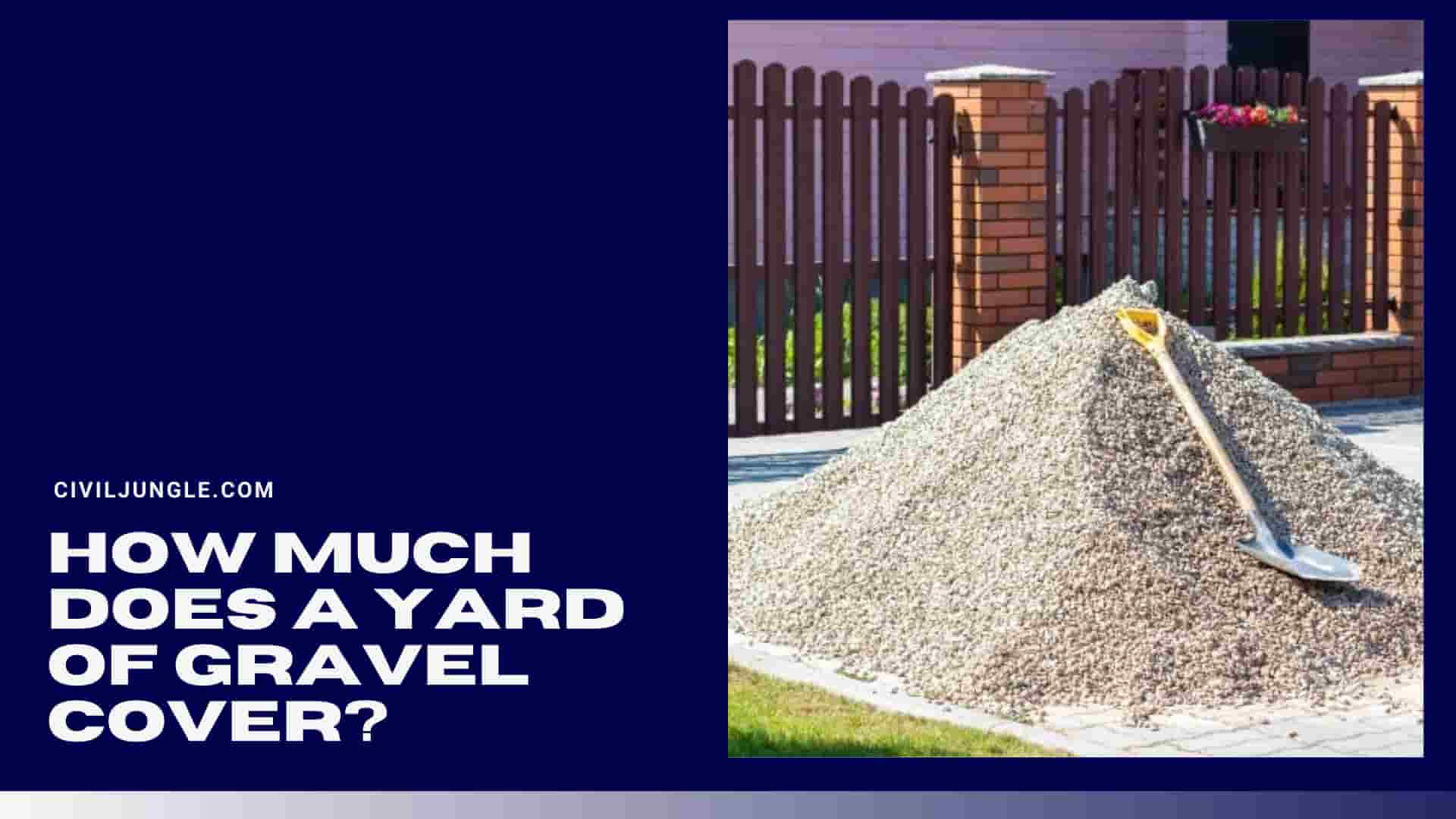

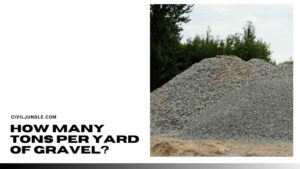

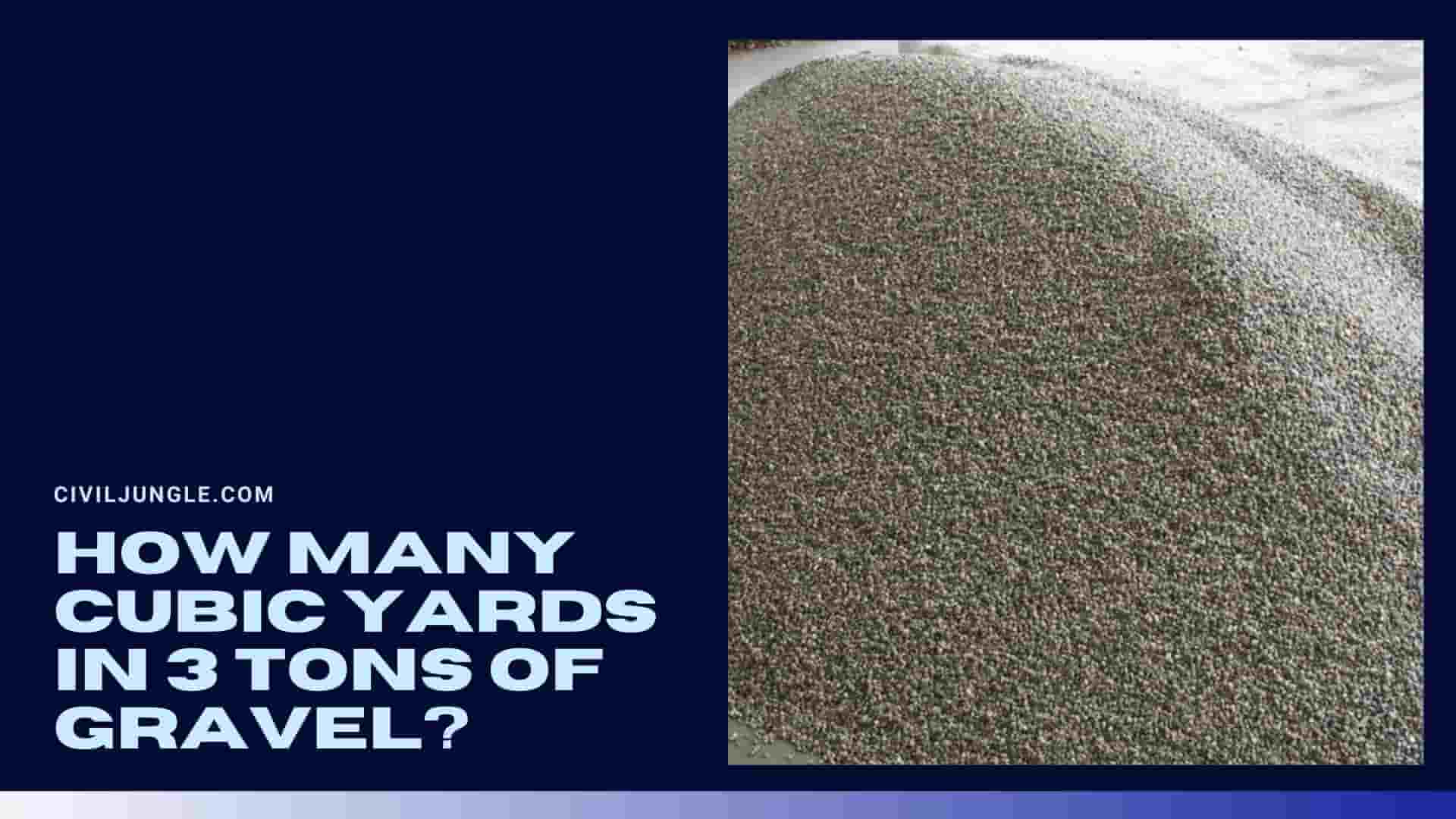
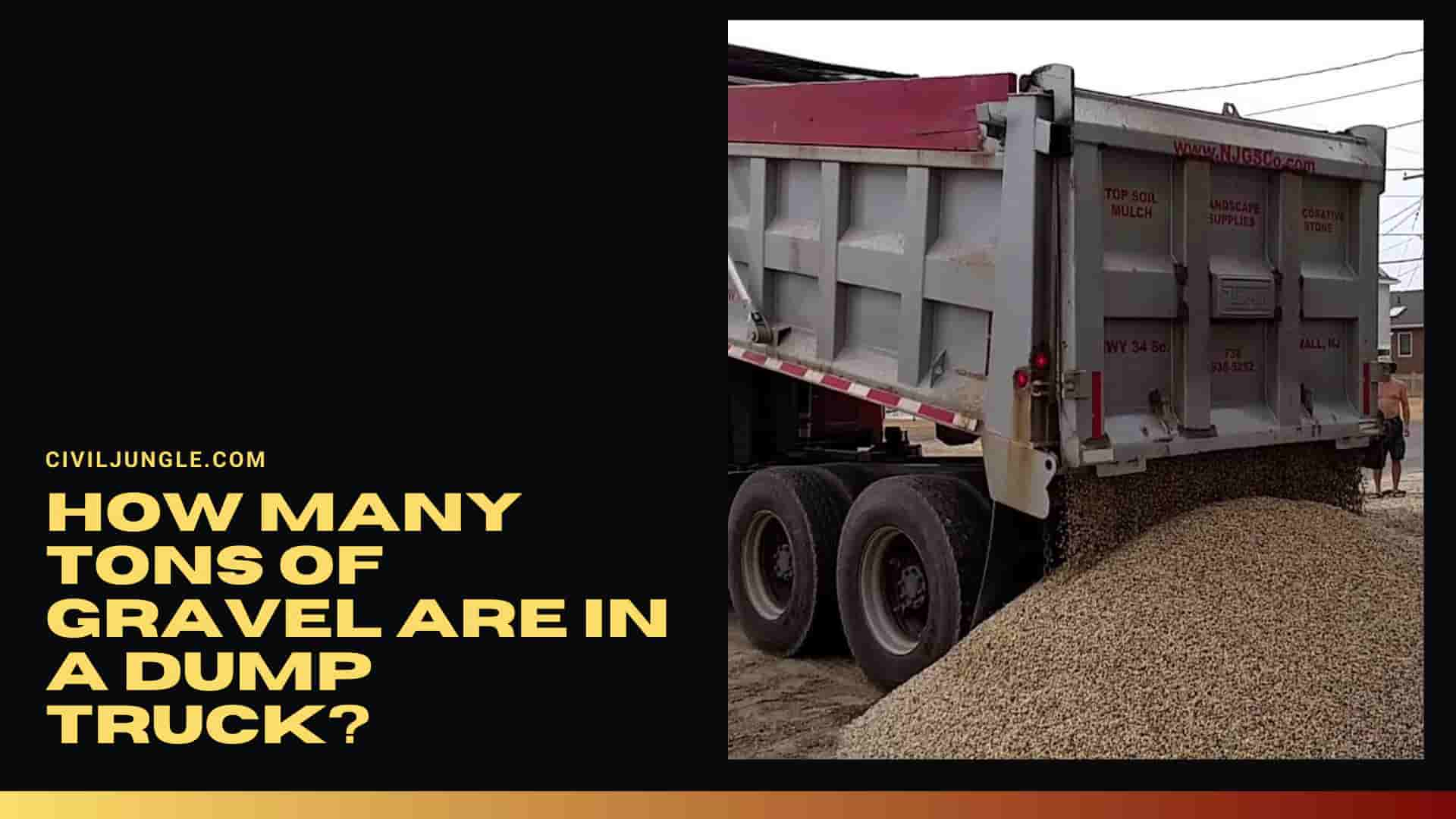
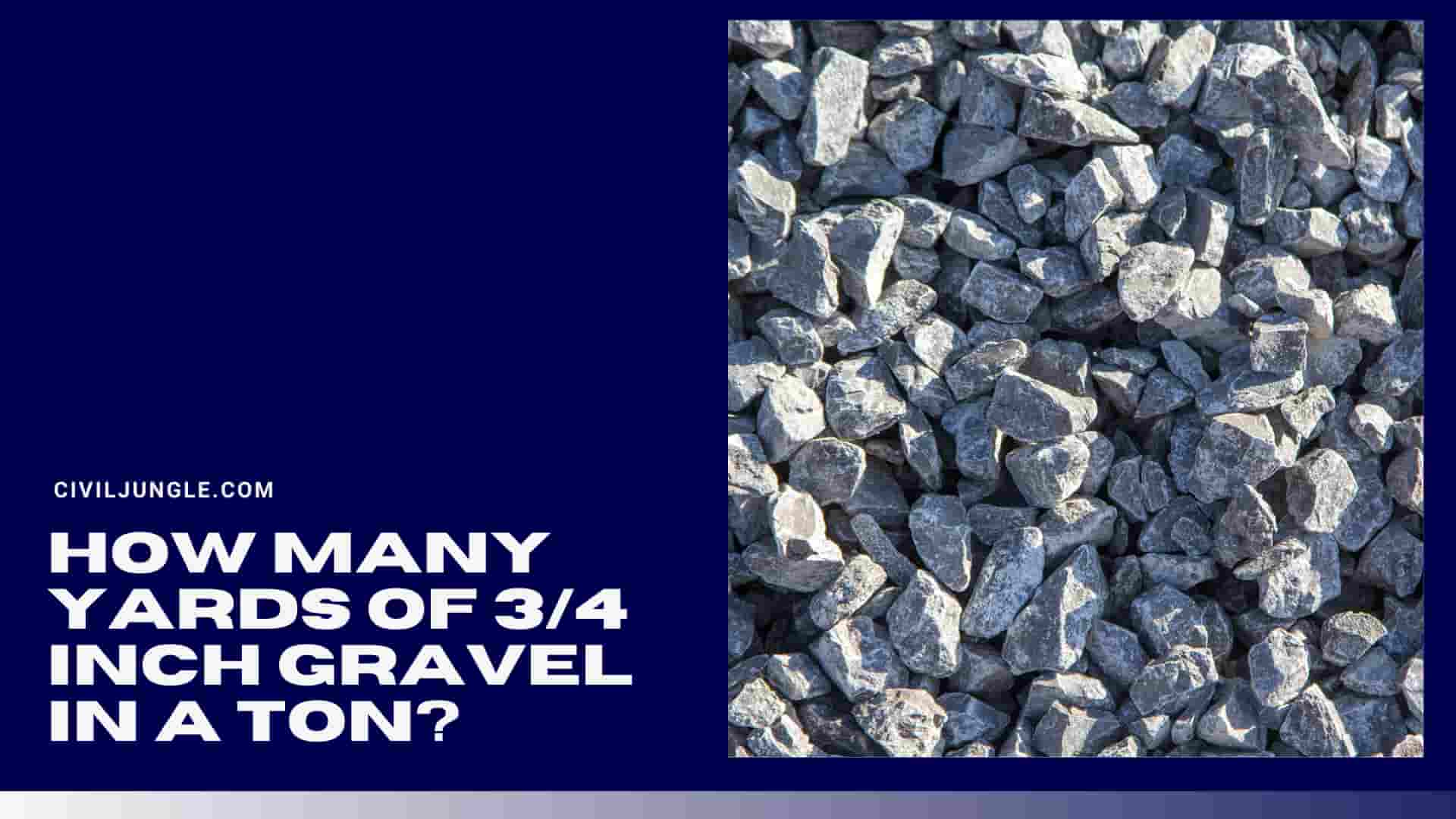
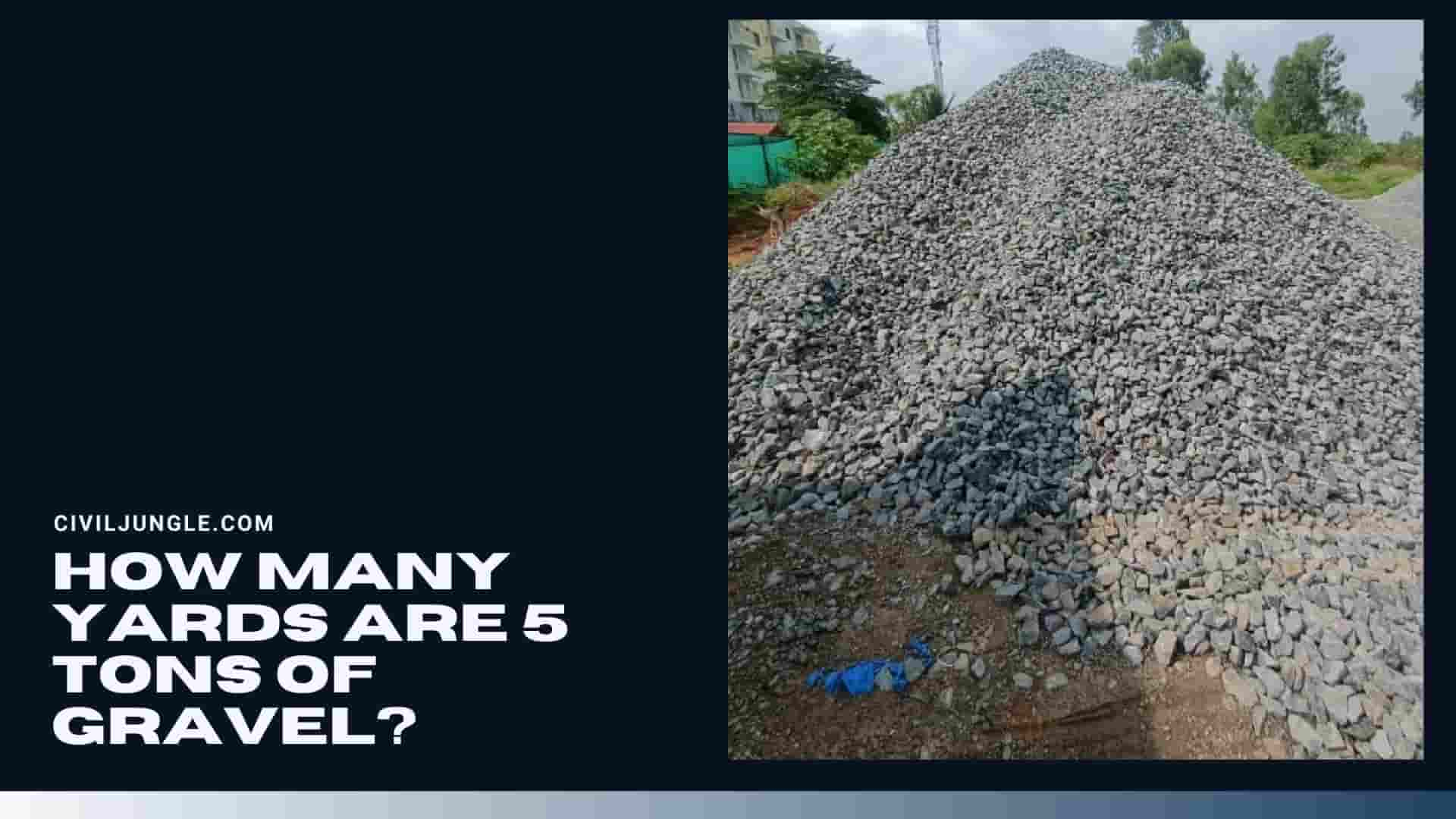


Leave a Reply